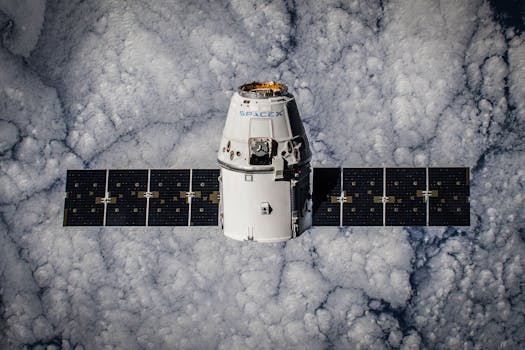
The Future of Satellites: Revolutionizing Global Connectivity
The future of satellites is expected to bring about a revolution in global connectivity, with advancements in space technology and the launch of new satellite constellations. Satellites have been a crucial part of modern telecommunications, providing internet access, navigation, and remote sensing capabilities to people around the world. However, the next generation of satellites is expected to be even more powerful, with the ability to provide faster and more reliable internet connectivity to even the most remote areas of the globe.
One of the key drivers of the future of satellites is the development of new satellite constellations, such as those being launched by companies like SpaceX and OneWeb. These constellations will consist of thousands of small satellites that will work together to provide global internet coverage, with the potential to reach even the most remote and underserved communities. The satellites will be equipped with advanced technology, including phased array antennas and high-gain amplifiers, which will enable them to provide faster and more reliable internet connectivity.
In addition to providing internet connectivity, the future of satellites is also expected to play a key role in the development of the Internet of Things (IoT). The IoT refers to the network of physical devices, vehicles, and other items that are embedded with sensors, software, and connectivity, allowing them to collect and exchange data. Satellites will be used to provide connectivity to IoT devices, enabling them to communicate with each other and with the cloud, and to provide real-time data and analytics.
The future of satellites will also have a major impact on the environment, with the potential to provide critical Earth observation capabilities. Satellites will be used to monitor climate change, track weather patterns, and detect natural disasters, providing critical data and insights to scientists, policymakers, and emergency responders. The use of satellites for Earth observation will also enable the development of new applications, such as precision agriculture, which will use satellite data to optimize crop yields and reduce waste.
Another area where the future of satellites is expected to have a major impact is in the development of 5G networks. 5G refers to the next generation of wireless network technology, which will provide faster and more reliable connectivity than current 4G networks. Satellites will be used to provide backhaul connectivity for 5G networks, enabling the transmission of data between cell towers and the core network. This will be particularly important in rural and remote areas, where the deployment of fiber optic cables may not be economically viable.
However, the future of satellites also poses significant challenges, including the risk of space debris and the need for sustainable development. The launch of thousands of new satellites will add to the already significant amount of space debris in Earth’s orbit, posing a risk to operational satellites and other space-based assets. To mitigate this risk, companies and governments will need to develop sustainable practices for the development and operation of satellites, including the use of reusable launch vehicles and the implementation of responsible decommissioning practices.
In conclusion, the future of satellites is expected to bring about a revolution in global connectivity, with advancements in space technology and the launch of new satellite constellations. The next generation of satellites will provide faster and more reliable internet connectivity, enable the development of the IoT, and provide critical Earth observation capabilities. However, the development of the future of satellites also poses significant challenges, including the risk of space debris and the need for sustainable development.
The development of the future of satellites will require significant investment and innovation, including the development of new technologies and the implementation of sustainable practices. Companies and governments will need to work together to ensure that the benefits of the future of satellites are realized, while minimizing the risks and challenges associated with the development of this critical technology.
As the world becomes increasingly dependent on satellites for communication, navigation, and remote sensing, it is essential that we prioritize the development of sustainable and responsible practices for the development and operation of satellites. This will require a coordinated effort from governments, companies, and other stakeholders to ensure that the future of satellites is developed in a way that benefits all of humanity, while minimizing the risks and challenges associated with this critical technology.



